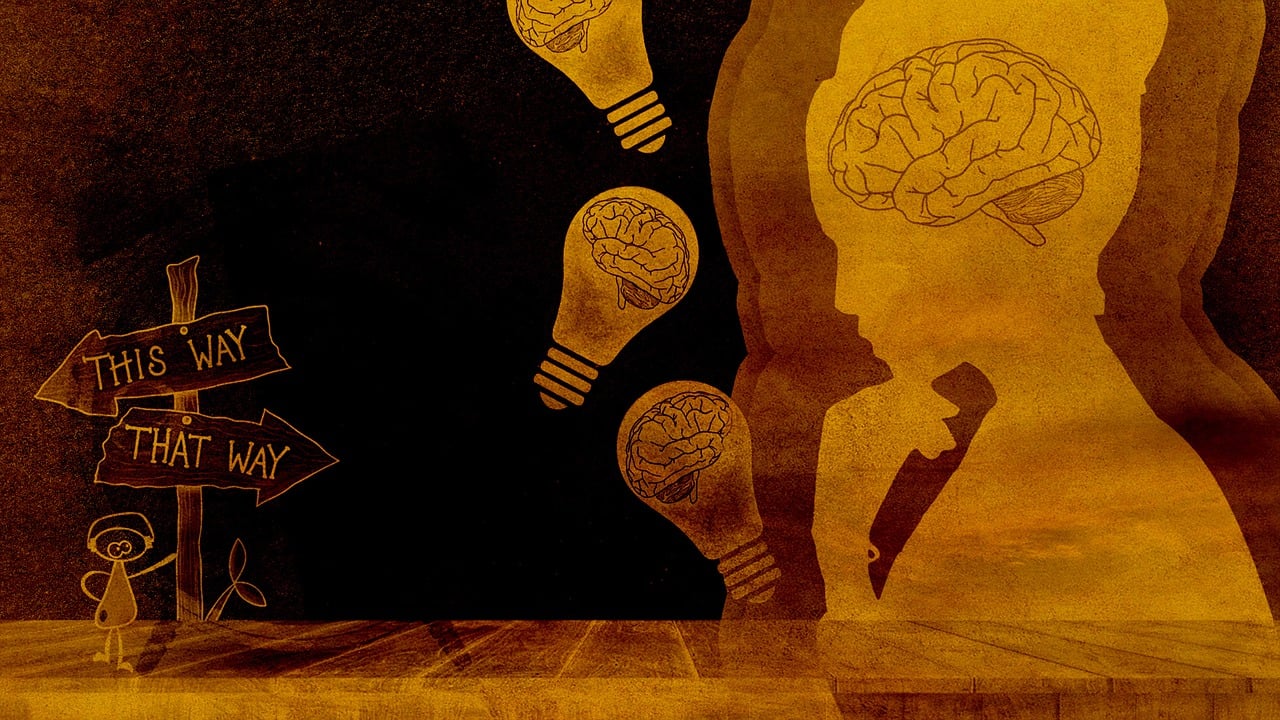Making decisions can be a daunting task, especially when we find ourselves trapped in a never-ending cycle of overthinking and analysis paralysis. We all know that feeling of being overwhelmed by countless options, each with its own pros and cons. But fear not, because I have a treasure trove of tips and strategies to help you overcome analysis paralysis and make decisions with confidence. In this article, we will explore practical techniques that will empower you to trust your gut, embrace uncertainty, and pave the way for a more decisive and fulfilling life. So, grab a pen and paper, because it’s time to conquer that indecisiveness and unlock your potential for greater happiness and harmony.

This image is property of images.unsplash.com.
1. Understanding Analysis Paralysis
1.1 What is Analysis Paralysis?
Analysis paralysis is a state of overthinking and indecisiveness that hinders the ability to make a decision or take action. It occurs when you are faced with multiple options or information overload, and you become overwhelmed with analyzing every possible outcome. This can lead to a sense of being stuck and unable to move forward.
1.2 The Dangers of Analysis Paralysis
Analysis paralysis can have negative consequences on both personal and professional levels. It can waste valuable time and resources, causing missed opportunities and delayed progress. It can also increase stress and anxiety, as the fear of making the wrong decision becomes overwhelming. Additionally, analysis paralysis can hinder personal growth and prevent you from reaching your full potential.
2. Recognizing the Signs of Analysis Paralysis
2.1 Indecisiveness and Procrastination
One common sign of analysis paralysis is difficulty making decisions. You find yourself constantly weighing the pros and cons, unable to commit to a specific course of action. This indecisiveness often leads to procrastination, as you postpone making a choice in fear of making the wrong one.
2.2 Overthinking and Overanalyzing
Another sign of analysis paralysis is the tendency to overthink and overanalyze every possible scenario. You find yourself caught in a cycle of endless speculation, going over the same information repeatedly without reaching a conclusion. This over-analysis can be mentally draining and prevent you from moving forward.
2.3 Fear of Making Mistakes
Analysis paralysis is often fueled by a fear of making mistakes. You may worry that a wrong decision could have severe consequences or lead to regret. This fear can paralyze you, as you become overly cautious about making any decision at all. It’s important to recognize that mistakes are a natural part of the learning process and can provide valuable insights for future decision-making.

This image is property of images.unsplash.com.
3. Embracing the Power of Intuition
3.1 Trusting Your Gut Feeling
Intuition is a powerful tool in decision-making. It is a subconscious process that taps into our accumulated knowledge and experiences, providing us with a sense of what feels right or wrong. Learning to trust your gut feeling can help you break free from analysis paralysis and make decisions with confidence. Pay attention to your instincts and inner wisdom, as they often guide you towards the right path.
3.2 Developing Intuitive Decision-Making Skills
Developing your intuitive decision-making skills takes practice. Start by tuning into your emotions and paying attention to how different choices make you feel. Practice mindfulness and self-awareness to enhance your ability to listen to your intuition. Trusting your instincts doesn’t mean disregarding rational thinking, but rather integrating both logic and intuition to make well-rounded decisions.
4. Setting Clear Goals and Priorities
4.1 Defining Your Purpose and Values
Setting clear goals and priorities is essential in overcoming analysis paralysis. Begin by defining your purpose and values in life. What matters most to you? What are your long-term aspirations? Clarifying your personal mission statement can provide a guiding light when faced with difficult decisions. Aligning your choices with your core values can bring clarity and focus.
4.2 Identifying Must-Have Criteria
When faced with options, it’s helpful to identify your must-have criteria. These are the essential factors that a decision or option must meet in order to be considered. By clearly defining your must-haves, you can eliminate choices that don’t align with your priorities, simplifying the decision-making process.
4.3 Assessing Potential Risks and Rewards
To overcome analysis paralysis, it’s important to assess the potential risks and rewards associated with each decision. Consider the possible outcomes and their likelihood of occurring. Evaluate the potential benefits or drawbacks of each choice. This assessment can help you make informed decisions by weighing the potential consequences and rewards.

This image is property of images.unsplash.com.
5. Gathering and Evaluating Information Effectively
5.1 Identifying Relevant Information Sources
When gathering information for decision-making, it’s crucial to identify reliable and relevant sources. Focus on reputable sources of information that provide accurate and unbiased data. Avoid information overload by narrowing down your search to sources that are directly related to your decision-making process.
5.2 Focusing on Key Factors
Instead of getting lost in a sea of information, focus on the key factors that are most relevant to your decision. Identify the critical aspects that will have the most significant impact on the outcome. By prioritizing these key factors, you can streamline the evaluation process and make more efficient decisions.
5.3 Avoiding Information Overload
Information overload can be overwhelming and contribute to analysis paralysis. To avoid this, set limits on the amount of time and effort you spend on gathering information. Define a criteria for what is “good enough” in terms of the data you need to make an informed decision. Trust that you have gathered sufficient information and resist the temptation to keep searching endlessly.
6. Utilizing Decision-Making Frameworks
6.1 SWOT Analysis
A helpful decision-making framework is the SWOT analysis, which stands for strengths, weaknesses, opportunities, and threats. This tool involves identifying and analyzing the internal strengths and weaknesses of a situation or option, as well as the external opportunities and threats. By examining these factors, you can gain insights and discover the best course of action.
6.2 Cost-Benefit Analysis
Another useful framework is the cost-benefit analysis. This involves weighing the costs and benefits associated with each option. Assign a value to each potential cost and benefit, and compare the overall value to determine the best choice. This framework can help you prioritize options based on their potential returns.
6.3 Decision Matrix Analysis
A decision matrix analysis is a systematic approach to evaluate and compare different options. It involves creating a matrix or table that lists the options and their corresponding criteria. Assign a weight or importance to each criteria, and rate each option based on how well it meets each criteria. By scoring and comparing the options, you can identify the most favorable choice.
7. Applying Rational and Emotional Thinking
7.1 Balancing Logic and Emotion
Balancing rational and emotional thinking is crucial in overcoming analysis paralysis. While logic and reasoning are important for making informed decisions, emotions also play a significant role. Consider both the facts and your feelings when making choices. Trust your logical thinking while acknowledging and honoring your emotions.
7.2 Considering Long-Term Implications
When making decisions, it’s essential to consider the long-term implications. Think beyond immediate outcomes and consider the potential consequences in the future. Assess how each option aligns with your long-term goals and aspirations. This big picture thinking can help you make decisions that are in line with your overall vision.
7.3 Seeking Advice from Trusted Individuals
Seeking advice from trusted individuals can provide valuable perspectives and help break through analysis paralysis. Reach out to mentors, colleagues, or friends who have experience or expertise in the area you’re facing a decision in. Discussing your options with others can help you gain new insights and consider different angles.
8. Taking Action and Learning from Mistakes
8.1 Overcoming Fear and Indecision
To overcome analysis paralysis, it’s important to overcome fear and indecision by taking action. Recognize that no decision is perfect and that mistakes are a natural part of the learning process. Give yourself permission to make choices and learn from the outcomes. Taking action breaks the cycle of overthinking and moves you towards progress.
8.2 Turning Mistakes into Opportunities
Instead of viewing mistakes as failures, choose to see them as learning opportunities. Embrace the lessons that come from making mistakes and use them to inform future decisions. Reflect on the outcomes, identify areas for improvement, and adjust your approach accordingly. Remember, growth often comes from the experiences gained through mistakes.
8.3 Reflecting on Successful Decisions
Just as it’s important to learn from mistakes, it’s also essential to reflect on successful decisions. Celebrate your wins and acknowledge the positive outcomes that result from your choices. Recognize the decision-making strategies and approaches that led to those successes, and continue to refine and build upon them.
9. Building Self-Confidence and Trust
9.1 Recognizing Your Strengths and Accomplishments
Building self-confidence is a key factor in overcoming analysis paralysis. Recognize and celebrate your strengths and accomplishments. Gain a sense of self-worth and belief in your abilities. Remind yourself of past achievements and the positive impact your decisions have had. This self-recognition can boost your confidence and empower you to make decisions with certainty.
9.2 Practicing Self-Compassion and Positive Affirmations
In the face of analysis paralysis, it’s important to practice self-compassion and offer yourself kindness. Be gentle with yourself and acknowledge that decision-making can be challenging. Practice positive self-talk and affirmations to counteract self-doubt and fear. Remind yourself that you are capable and deserving of making decisions with confidence.
9.3 Honoring Your Authenticity
Throughout the decision-making process, it’s vital to honor your authenticity. Consider your values, passions, and personal preferences when making choices. Trust your inner voice and align your decisions with who you truly are. Embracing your authenticity allows you to make decisions that are in harmony with your true self.
10. Maintaining a Growth Mindset
10.1 Embracing Challenges and Learning Opportunities
Maintaining a growth mindset is crucial in overcoming analysis paralysis. Embrace challenges as opportunities for growth and learning. Approach decisions with a mindset that views failures and setbacks as stepping stones to success. Embrace new information and experiences, and continuously seek opportunities to expand your knowledge and skills.
10.2 Cultivating Curiosity and Adaptability
Cultivating curiosity and adaptability can help overcome analysis paralysis. Be open to exploring different possibilities and perspectives. Embrace curiosity as a driving force for gathering information and exploring options. Develop adaptability by being willing to adjust your plans and strategies based on new insights or changing circumstances.
10.3 Celebrating Progress and Unlocking Potential
Finally, celebrate your progress and acknowledge the growth you have achieved. Recognize that overcoming analysis paralysis is a journey, and every step forward is an accomplishment. Embrace the potential within you and continue to unlock it by applying the knowledge and skills you have gained. Have faith in your ability to navigate future decisions with confidence.
By following these tips and strategies, you can overcome analysis paralysis and become more decisive in your decision-making process. Remember, each decision is an opportunity for growth and learning, and by embracing your own potential, you can unlock a more fulfilling and purposeful life.


